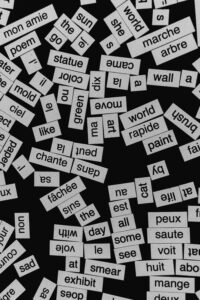When it comes to navigating the world of finance, understanding key terminologies is essential. One such term that often pops up in trading discussions is the “Limit Order.” As an experienced investor, I know the significance of mastering this concept to make informed decisions in the market.
A Limit Order is a powerful tool that allows traders to set specific instructions for buying or selling an asset at a predetermined price. In this article, I’ll delve into the nuances of Limit Orders, shedding light on how they work and why they are crucial for maximizing profits and minimizing risks in the financial realm. Let’s explore this fundamental concept together.
Key Takeaways
- Limit Order is a vital tool in trading that allows setting specific prices for buying or selling assets, providing control over trades.
- Placing a Limit Order helps protect against unexpected price fluctuations, offers a strategic trading approach, and enhances precision and discipline in trading.
- Types of Limit Orders such as Limit Buy, Limit Sell, Fill or Kill, Immediate or Cancel, and One-Cancels-the-Other cater to different trading strategies and preferences.
- Utilizing Limit Orders offers advantages like price control, avoiding slippage, promoting patience, ensuring precision, enabling automation, and providing flexibility in trading strategies.
- Implementing Limit Orders effectively involves setting realistic prices, adjusting orders according to market conditions, diversifying order types, monitoring market volatility, and leveraging technology for swift and accurate order management.
Understanding Limit Order
When it comes to trading in the financial markets, a Limit Order is a crucial tool that every trader should have in their arsenal. This order type allows me to set a specific price at which I want to buy or sell an asset. By using a Limit Order, I have more control over the price I pay or receive for a security, providing me with a level of certainty in my trades.
One of the key advantages of using a Limit Order is that it offers protection against unexpected price fluctuations. By setting a predetermined price, I can avoid buying or selling at undesired levels, helping me avoid potential losses or missed opportunities. This level of precision is essential in today’s fast-paced and volatile markets.
Additionally, a Limit Order allows me to take a more strategic approach to trading. I can plan my trades in advance, setting clear entry and exit points based on my analysis and trading strategy. This disciplined approach not only helps me make more informed decisions but also helps me stay focused on my trading objectives.
In essence, a Limit Order empowers me to trade with more precision, control, and discipline in the financial markets. It’s a valuable tool that can help me optimize my trading performance and achieve my financial goals.
How Does a Limit Order Work?
When I place a Limit Order in trading, I am setting a specific price at which I am willing to buy or sell an asset. This means that the trade will only be executed if the market price reaches my specified limit price or better.
Here’s a brief breakdown of how a Limit Order functions:
- Setting Boundaries: With a Limit Order, I have control over the price at which my trade gets executed. I can define the maximum price at which I’m willing to buy or the minimum price at which I’m willing to sell.
- Avoiding Unexpected Changes: By using a Limit Order, I prevent buying or selling an asset at a price that significantly deviates from what I’m comfortable with. This helps me avoid sudden market fluctuations.
- Accomplishing Strategic Goals: Whether I aim to lock in profits or minimize losses, a Limit Order assists me in adhering to my trading strategy by automating the buy/sell process at predetermined price points.
In essence, a Limit Order empowers me to take a more deliberate and disciplined approach to trading, ensuring that my transactions align with my predetermined price targets.
Types of Limit Orders
When it comes to trading with Limit Orders, there are various types that cater to different trading strategies and preferences. Here are some common types of Limit Orders you might encounter:
- Limit Buy Order: This type of order specifies the maximum price at which I’m willing to buy an asset. It ensures that I won’t pay more than my predetermined price.
- Limit Sell Order: On the flip side, a Limit Sell Order sets the minimum price at which I’m willing to sell an asset. It helps me lock in profits by selling when the price reaches my target.
- Fill or Kill Order: With this type of order, the entire order must be filled immediately at the specified price or canceled entirely. It’s handy when I want quick execution at a specific price.
- Immediate or Cancel Order: This order type requires that as soon as part of the order is executed, any remaining quantity is canceled. It’s useful for securing immediate trades even if the full order can’t be filled.
- One-Cancels-the-Other Order (OCO): OCO orders consist of two parts: a primary order and a secondary order. If one part executes, the other is automatically canceled, allowing me to place multiple orders with different conditions simultaneously.
Understanding the nuances of each type of Limit Order can help me tailor my trading approach to meet my specific objectives effectively.
| Data | Value |
|---|---|
| Limit Orders | Various types cater to different trading strategies |
| Limit Buy Order | Specifies maximum price for buying an asset |
| Limit Sell Order | Sets minimum price for selling an asset |
| Fill or Kill Order | Requires immediate filling at specified price or cancelation |
| Immediate or Cancel Order | Executes part of the order immediately or cancels remaining quantity |
| One-Cancels-the-Other Order (OCO) | Allows placing multiple orders with different conditions simultaneously |
Advantages of Using Limit Orders
When it comes to trading, Limit Orders offer specific advantages that can enhance one’s strategy. Here are a few key benefits of utilizing Limit Orders:
- Price Control: With a Limit Order, I can set the price at which I’m willing to buy or sell an asset, giving me more control over the execution price.
- Avoiding Slippage: By setting a specific price with a Limit Order, I can avoid slippage, which can occur when the market moves quickly, resulting in a less favorable price.
- Patience: Limit Orders allow me to be patient and wait for the market conditions to meet my desired price levels, helping me avoid making impulsive decisions.
- Precision: Using Limit Orders enables me to execute trades with precision, ensuring that I enter or exit the market at my predetermined price point.
- Automation: I can automate my trading strategy with Limit Orders, as they execute automatically when the market reaches the set price, saving me time and effort.
- Flexibility: Whether I am a long-term investor or a short-term trader, Limit Orders offer me the flexibility to tailor my trades according to my specific investment goals and risk tolerance.
By leveraging these advantages, I can optimize my trading approach and achieve my financial objectives more effectively.
Implementing Limit Orders for Successful Trading
Implementing Limit Orders is crucial for successful trading. By setting specific price points at which to buy or sell assets, I ensure that my trades are executed at desired levels. Here are a few key strategies I employ to effectively use Limit Orders in my trading:
- Setting Realistic Limit Prices: I analyze market trends and establish Limit Order prices based on thorough research.
- Adjusting Orders Wisely: I regularly review and adjust my Limit Orders to adapt to changing market conditions.
- Diversifying Order Types: I utilize various types of Limit Orders such as buy limit, sell limit, and stop-limit orders to manage risks efficiently.
- Monitoring Market Volatility: I stay informed about market volatility to make informed decisions when placing Limit Orders.
- Leveraging Technology: I use advanced trading platforms that allow me to place and manage Limit Orders swiftly and accurately.
Implementing Limit Orders empowers me to take control of my trades, reduce emotional trading decisions, and optimize my trading outcomes effectively.
Conclusion
Implementing Limit Orders is crucial for successful trading. By setting realistic limit prices, adjusting orders wisely, diversifying order types, monitoring market volatility, and utilizing technology, traders can enhance their trading experience. Taking control of trades, minimizing emotional decisions, and optimizing outcomes are key benefits of using Limit Orders. Stay informed, stay strategic, and make the most of Limit Orders to elevate your trading game.
Frequently Asked Questions
What is the importance of Limit Orders in trading?
Limit Orders allow traders to set specific prices at which they want to buy or sell an asset. This helps in executing trades at desired price levels, even when traders are not actively monitoring the market.
How can setting realistic limit prices help in trading?
Setting realistic limit prices can prevent traders from missing out on profitable opportunities or executing trades at undesired levels. It helps in aligning trading decisions with market conditions.
Why is it crucial to adjust orders wisely?
Adjusting orders wisely enables traders to adapt to changing market dynamics. It allows them to capitalize on favorable price movements and avoid unnecessary losses.
How does diversifying order types benefit traders?
Diversifying order types allows traders to have more flexibility and control over their trades. It helps in optimizing trade execution and managing risks effectively.
Why is monitoring market volatility important when using Limit Orders?
Market volatility can impact asset prices significantly, leading to rapid price changes. By monitoring market volatility, traders can make informed decisions and avoid unnecessary risks.
In what way can leveraging technology enhance the use of Limit Orders?
Leveraging technology can streamline the process of placing and managing Limit Orders. It can help traders stay organized, execute orders efficiently, and take advantage of automated trading features.



